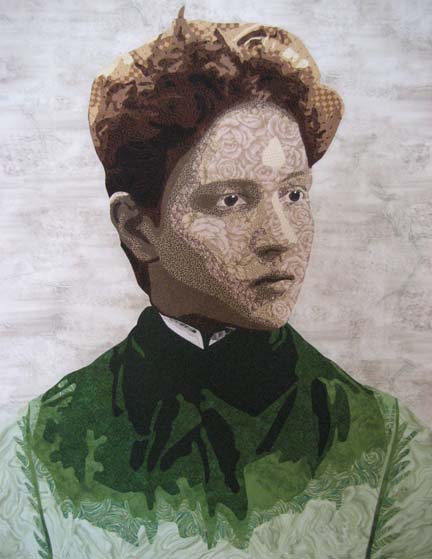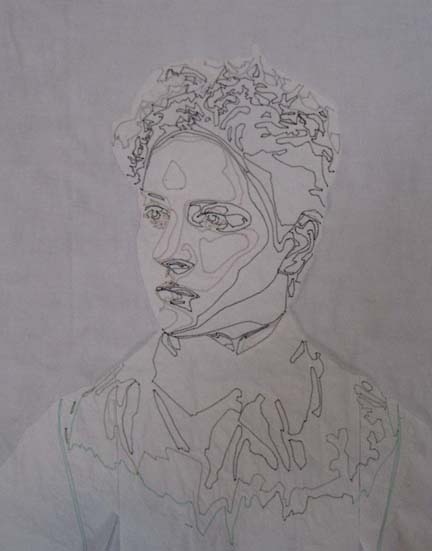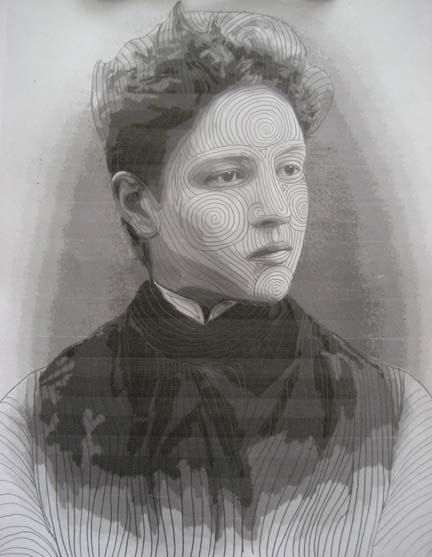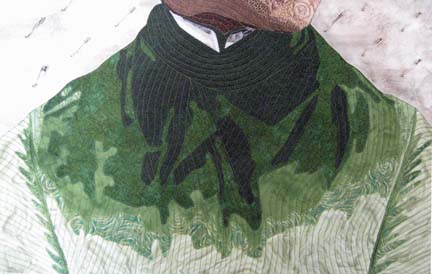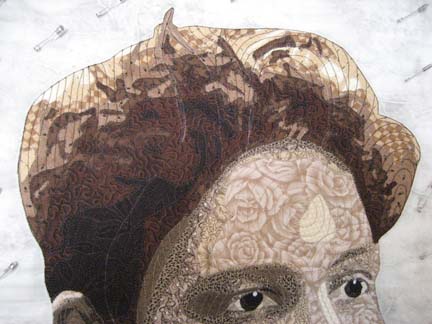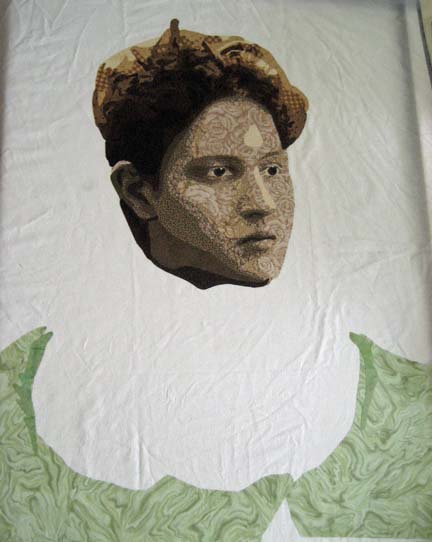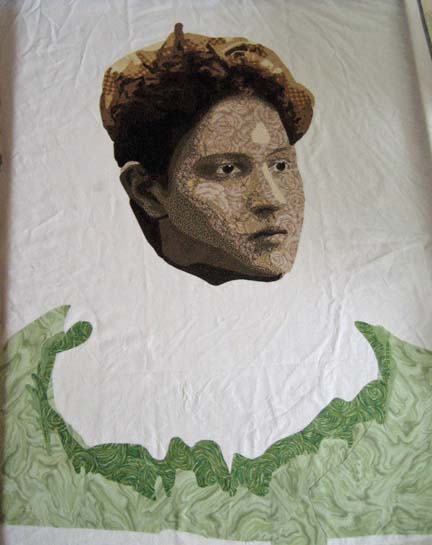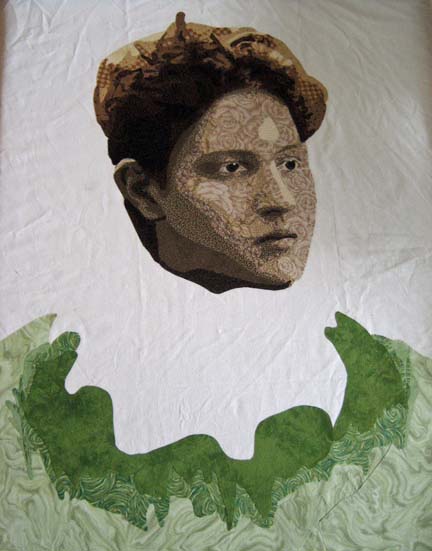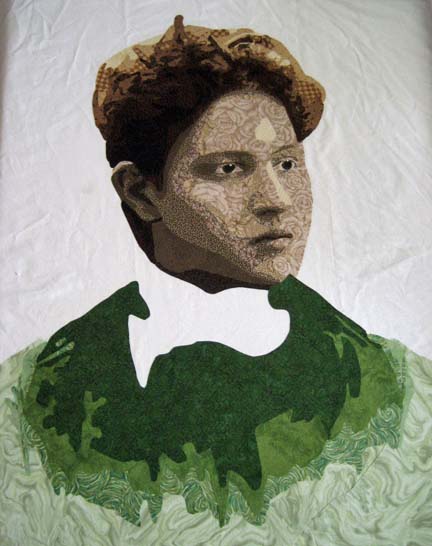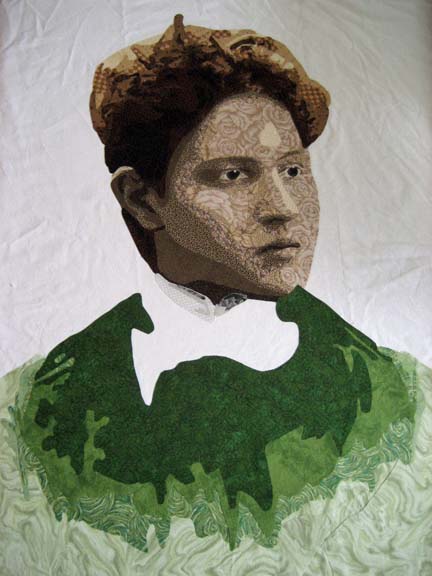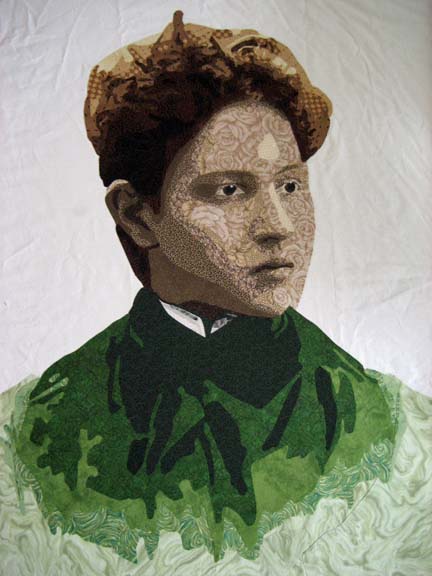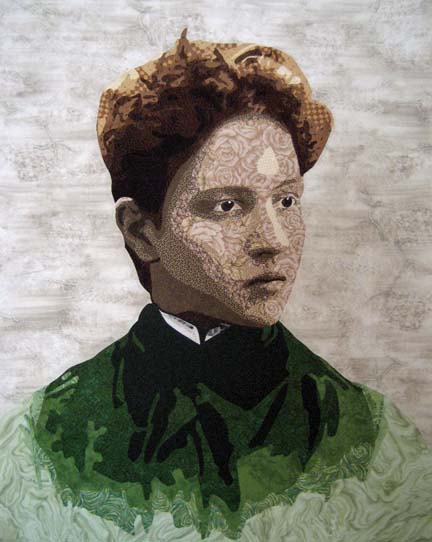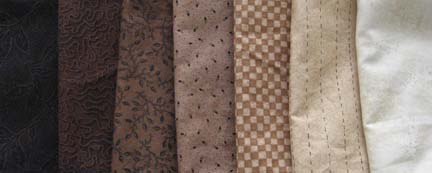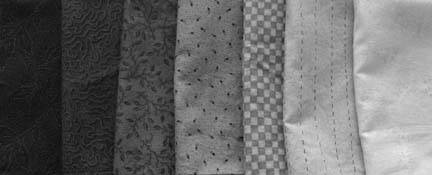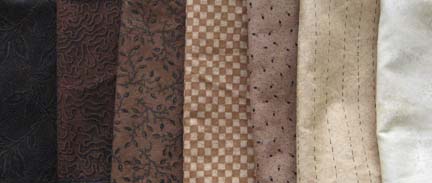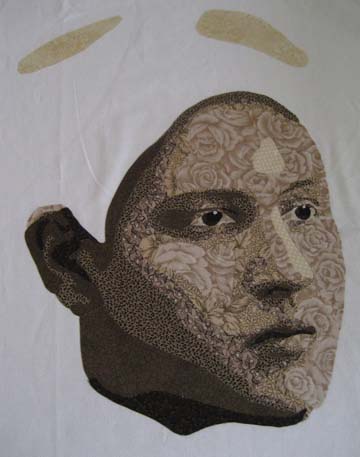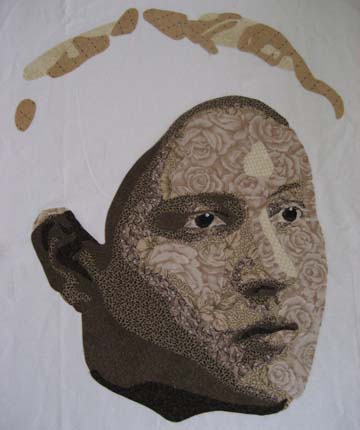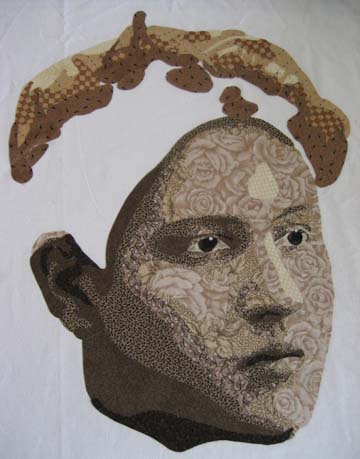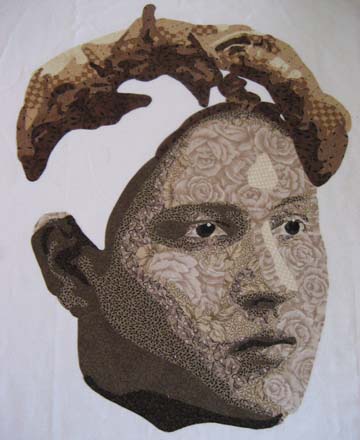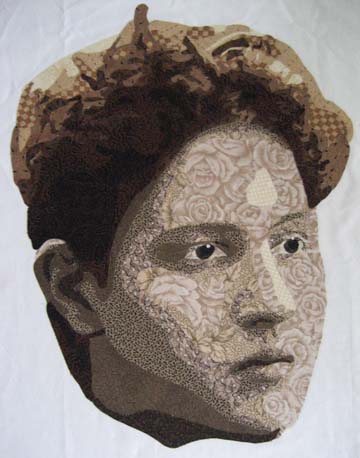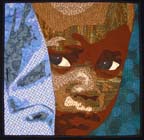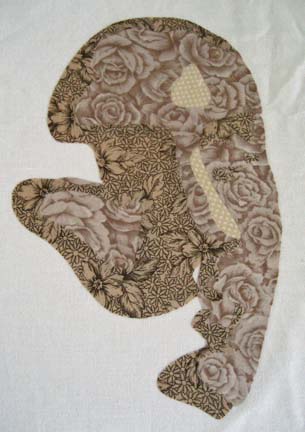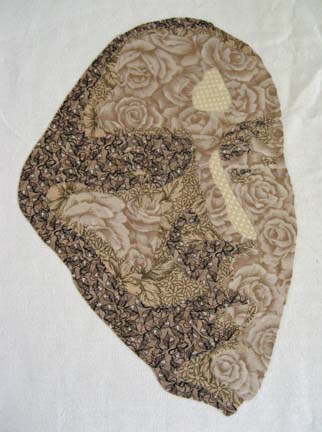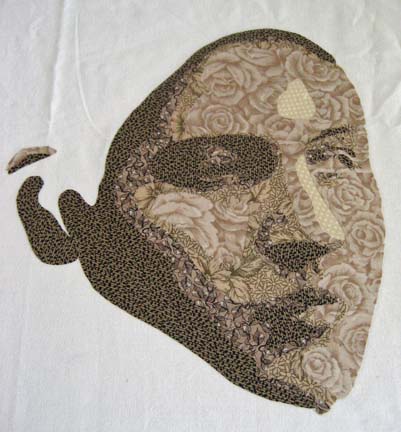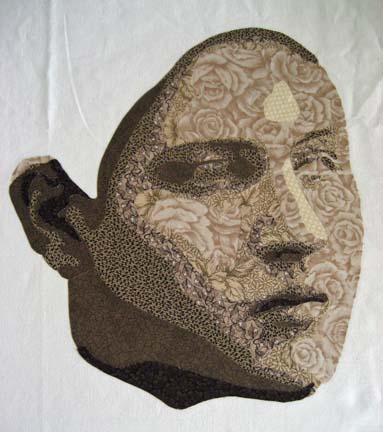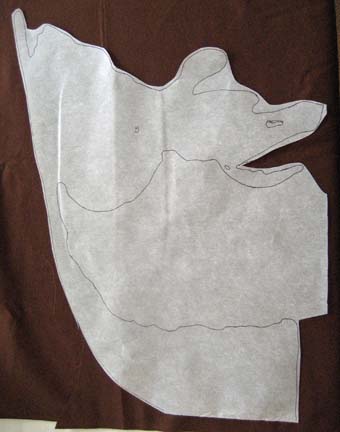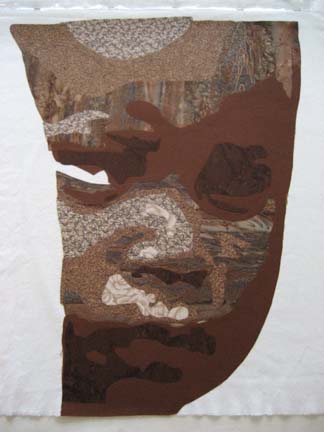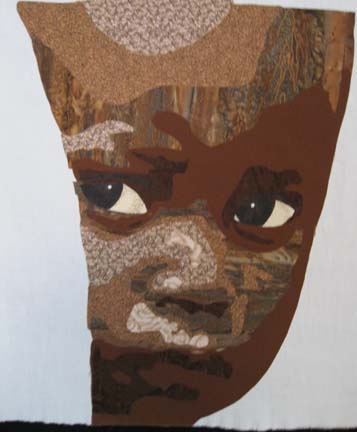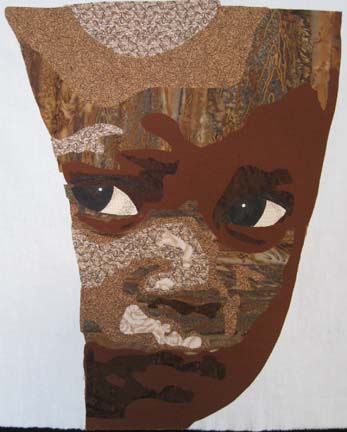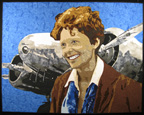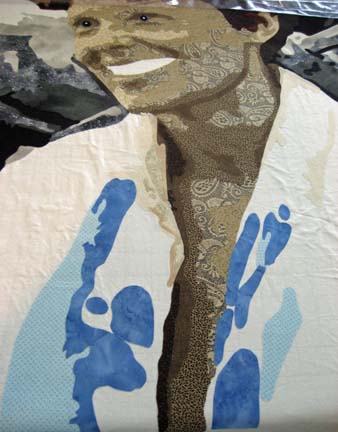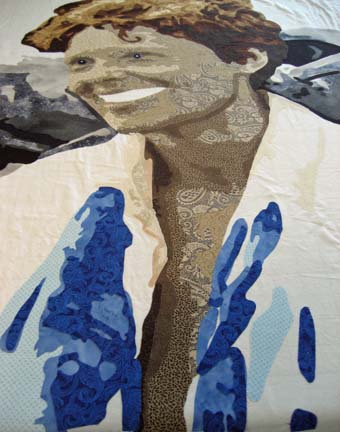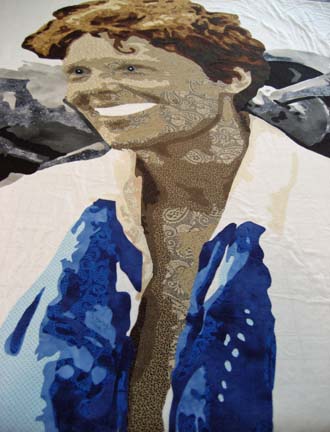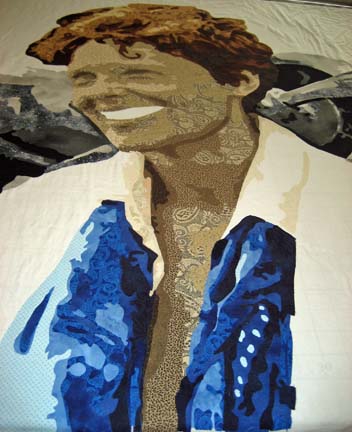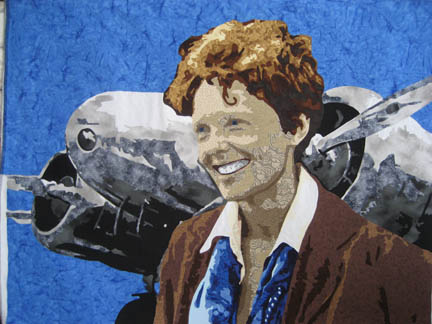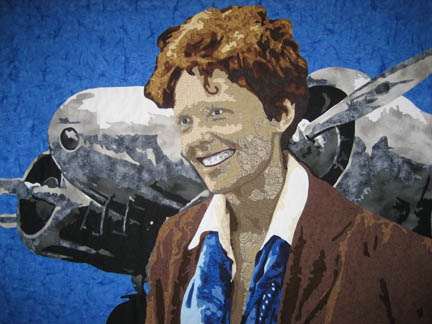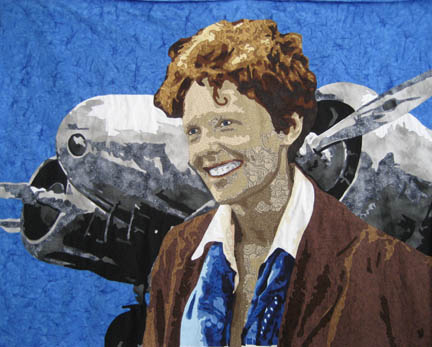My Amelia piece is coming to an end. She is in the final stages of completion. But there are still a few things I wanted to share.
First of all, teeth. I think I stumbled into making teeth when I made Shoshanna. It’s a formula of fabrics that I’ve used many times — but on this piece, I wanted to change it up — so I picked new fabrics — and it doesn’t work.
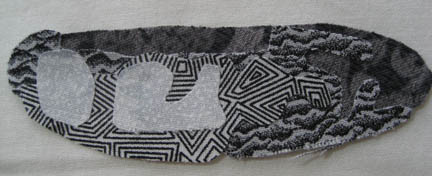
It was still instructive. It taught me that even though you have a good value range that works — it may still not work for the realism you’re looking for. In the case of teeth, the first value isn’t really white — it’s a very hard to find gray — but it isn’t bright white — because let’s face it, most people don’t really have bright white teeth. Also, the following value, the 2nd one, needs to be more white than black. Teeth are small and if you get an evenly spaced pattern of black & white — you’ll see more black in this layer than you’ll want.
This is what I used for the mouth — it works better.
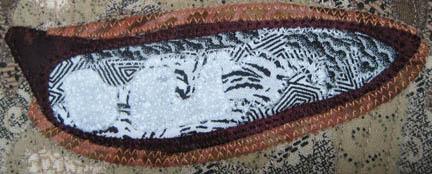
Quilting. I’ve been quilting and quilting and quilting. This is a large piece — for me anyway — and it has taken me a couple of weeks to finish quilting it.
How do I start? I take a picture of the piece & print it out in black & white. Than I draw on it with a pencil to plan how I will quilt the piece.
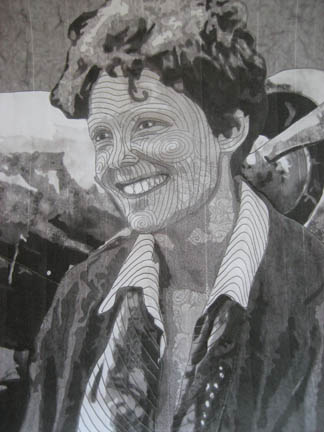
I don’t like to mark the piece if I can get away with not — but there are always the main lines of the face that I lay out with a soluble pen. A few lines here & there — and the rest of it flows outward.
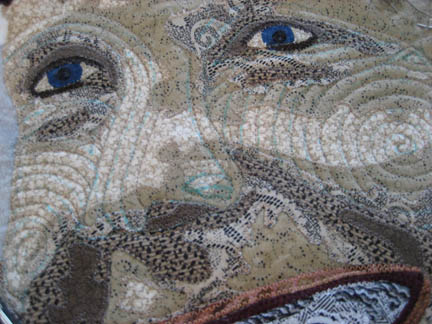
Have you ever heard that you should quilt from the inside out? It is true — especially if you are quilting closely together. My lines are about 1/4 inch apart. But remember, I prefer to mark the main lines & echo from there — but that can mean that I can quilt myself into a corner — like I did here. The blue scarf to the left is all ready closely quilted. Then I laid out the lapel on the right side — and starting quilting in — only to find a hump that I tried really hard to ignore & “quilt it out”. Sometimes you can do that — if it’s small enough — but this was just not working. What could I do? I spent about an hour ripping it out.

And then I marked my lines from the outside in — so I could quilt from the inside out.
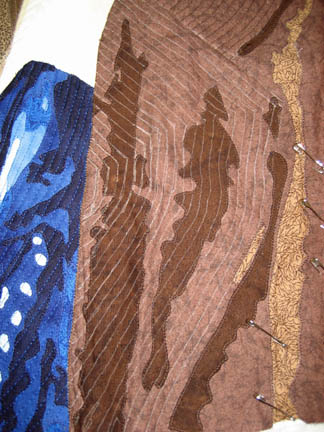
See how nice & flat it is now?
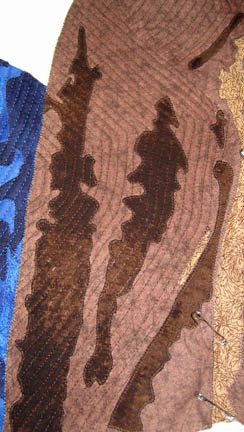
On a piece this large — I developed quite a bump on the top that I smoothed as I went. I quilted the face first, then the neck & scarf — and then it became apparent that I was developing a wave on the right & left.
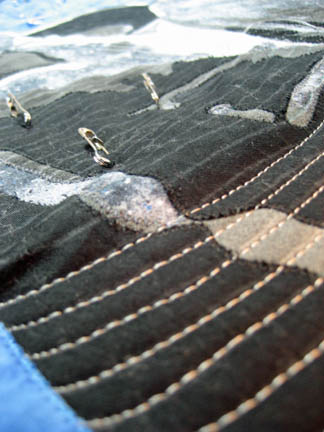
Even though I started with a perfectly smooth top pinned to the batting & backing — it stretched as I quilted it. Even though I had a base muslin layer that was perfectly straight — it stretched. I suspect that I wouldn’t have the same problem on a frame. It may just be the nature of working on a home machine and the tension that the hands put on the top as you work along. I’m sure some of it is the result of tight quilting.
So I made the decision to move pins as I went — to smooth out the top. And now that I’m putting on the binding, the entire thing is <almost> completely flat. And the back is smooth — no tucks.
One last thought — did you see how freaking EVEN my free motion stitching is up there? I have amazed myself. I think that making more pieces this year has meant more quilting experience & maybe therefore more even quilting. It isn’t my intention — I really think that even quilt stitches are more pertinent for bed quilts than art quilts — but it’s interesting to see it arise from the many hours of practice.
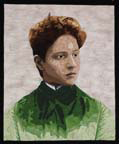 I have just finished my latest piece, Arminta Patterson.
I have just finished my latest piece, Arminta Patterson.
